Embedding Functional Data: Multidimensional Scaling and Manifold Learning
Aug 30, 2022Ery Arias-Castro, Wanli Qiao
We adapt concepts, methodology, and theory originally developed in the areas of multidimensional scaling and dimensionality reduction for multivariate data to the functional setting. We focus on classical scaling and Isomap -- prototypical methods that have played important roles in these area -- and showcase their use in the context of functional data analysis. In the process, we highlight the crucial role that the ambient metric plays.
Supervising Embedding Algorithms Using the Stress
Jul 14, 2022Ery Arias-Castro, Phong Alain Chau

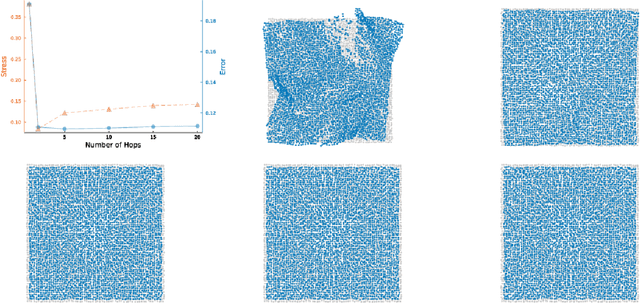
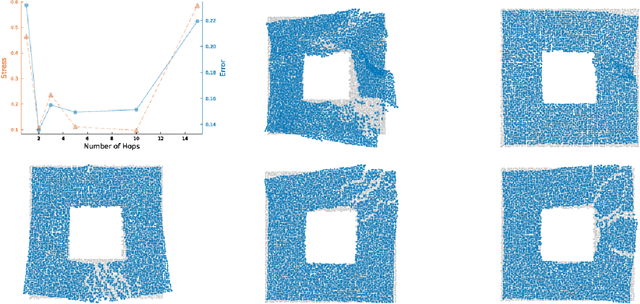
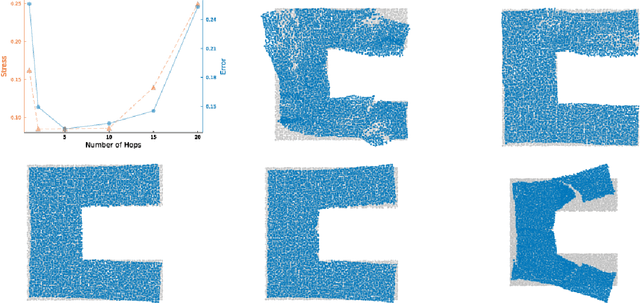
While classical scaling, just like principal component analysis, is parameter-free, most other methods for embedding multivariate data require the selection of one or several parameters. This tuning can be difficult due to the unsupervised nature of the situation. We propose a simple, almost obvious, approach to supervise the choice of tuning parameter(s): minimize a notion of stress. We substantiate this choice by reference to rigidity theory. We extend a result by Aspnes et al. (IEEE Mobile Computing, 2006), showing that general random geometric graphs are trilateration graphs with high probability. And we provide a stability result \`a la Anderson et al. (SIAM Discrete Mathematics, 2010). We illustrate this approach in the context of the MDS-MAP(P) algorithm of Shang and Ruml (IEEE INFOCOM, 2004). As a prototypical patch-stitching method, it requires the choice of patch size, and we use the stress to make that choice data-driven. In this context, we perform a number of experiments to illustrate the validity of using the stress as the basis for tuning parameter selection. In so doing, we uncover a bias-variance tradeoff, which is a phenomenon which may have been overlooked in the multidimensional scaling literature. By turning MDS-MAP(P) into a method for manifold learning, we obtain a local version of Isomap for which the minimization of the stress may also be used for parameter tuning.
Clustering by Hill-Climbing: Consistency Results
Feb 18, 2022Ery Arias-Castro, Wanli Qiao
We consider several hill-climbing approaches to clustering as formulated by Fukunaga and Hostetler in the 1970's. We study both continuous-space and discrete-space (i.e., medoid) variants and establish their consistency.
An Asymptotic Equivalence between the Mean-Shift Algorithm and the Cluster Tree
Nov 19, 2021Ery Arias-Castro, Wanli Qiao
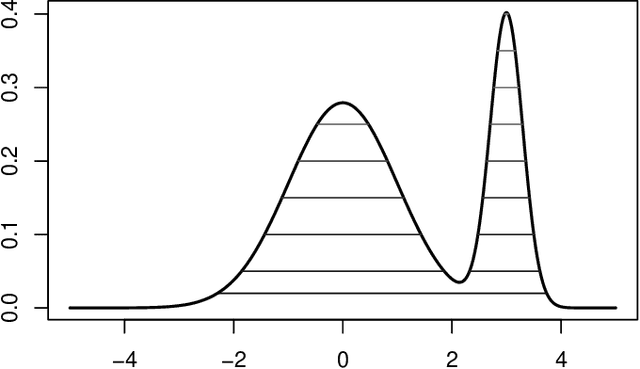
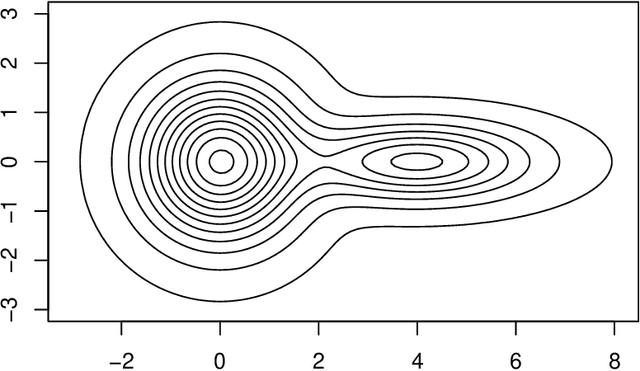
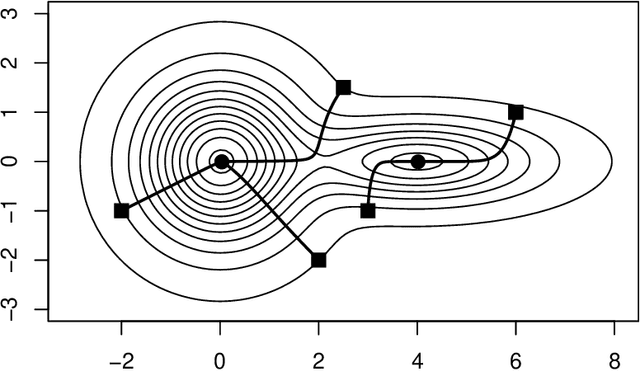
Two important nonparametric approaches to clustering emerged in the 1970's: clustering by level sets or cluster tree as proposed by Hartigan, and clustering by gradient lines or gradient flow as proposed by Fukunaga and Hosteler. In a recent paper, we argue the thesis that these two approaches are fundamentally the same by showing that the gradient flow provides a way to move along the cluster tree. In making a stronger case, we are confronted with the fact the cluster tree does not define a partition of the entire support of the underlying density, while the gradient flow does. In the present paper, we resolve this conundrum by proposing two ways of obtaining a partition from the cluster tree -- each one of them very natural in its own right -- and showing that both of them reduce to the partition given by the gradient flow under standard assumptions on the sampling density.
Level Sets or Gradient Lines? A Unifying View of Modal Clustering
Sep 17, 2021Ery Arias-Castro, Wanli Qiao
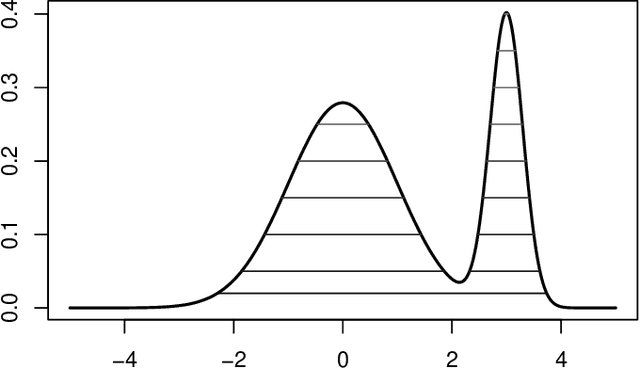
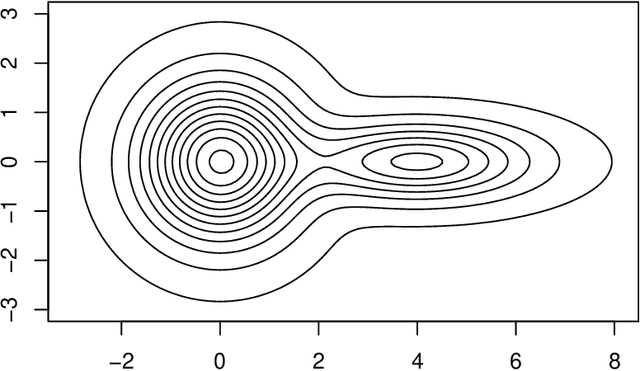
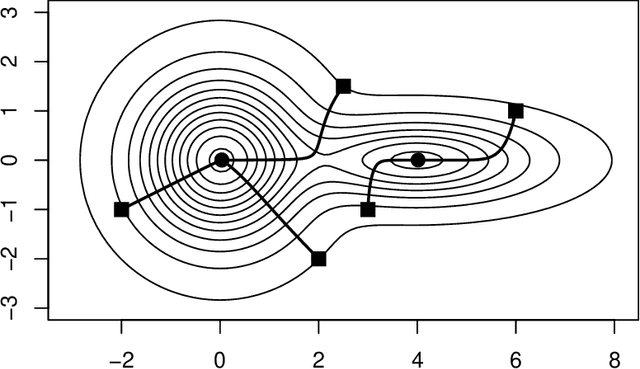
The paper establishes a strong correspondence, if not an equivalence, between two important clustering approaches that emerged in the 1970's: clustering by level sets or cluster tree as proposed by Hartigan and clustering by gradient lines or gradient flow as proposed by Fukunaga and Hosteler.
Minimax Estimation of Distances on a Surface and Minimax Manifold Learning in the Isometric-to-Convex Setting
Nov 25, 2020Ery Arias-Castro, Phong Alain Chau
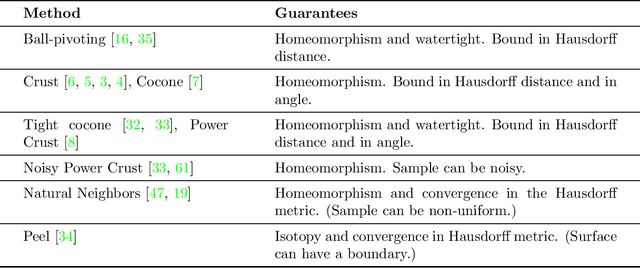
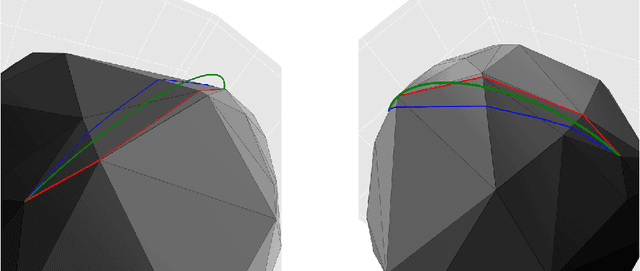
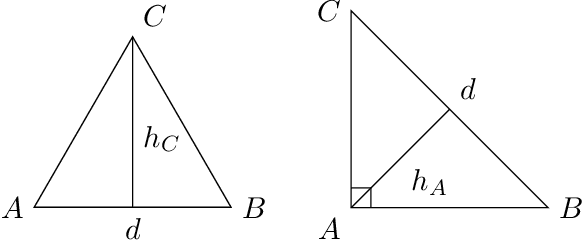
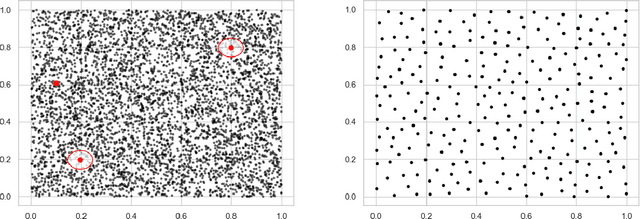
We start by considering the problem of estimating intrinsic distances on a smooth surface. We show that sharper estimates can be obtained via a reconstruction of the surface, and discuss the use of the tangential Delaunay complex for that purpose. We further show that the resulting approximation rate is in fact optimal in an information-theoretic (minimax) sense. We then turn to manifold learning and argue that a variant of Isomap where the distances are instead computed on a reconstructed surface is minimax optimal for the problem of isometric manifold embedding.
Perturbation Bounds for Procrustes, Classical Scaling, and Trilateration, with Applications to Manifold Learning
Oct 22, 2018Ery Arias-Castro, Adel Javanmard, Bruno Pelletier


One of the common tasks in unsupervised learning is dimensionality reduction, where the goal is to find meaningful low-dimensional structures hidden in high-dimensional data. Sometimes referred to as manifold learning, this problem is closely related to the problem of localization, which aims at embedding a weighted graph into a low-dimensional Euclidean space. Several methods have been proposed for localization, and also manifold learning. Nonetheless, the robustness property of most of them is little understood. In this paper, we obtain perturbation bounds for classical scaling and trilateration, which are then applied to derive performance bounds for Isomap, Landmark Isomap, and Maximum Variance Unfolding. A new perturbation bound for procrustes analysis plays a key role.
A Simple Approach to Sparse Clustering
Sep 11, 2016Ery Arias-Castro, Xiao Pu
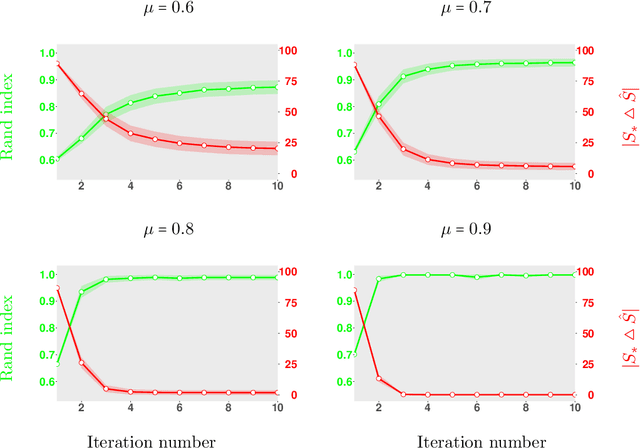
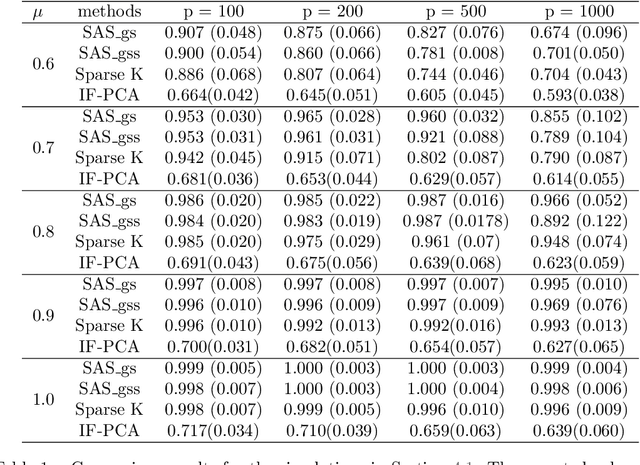
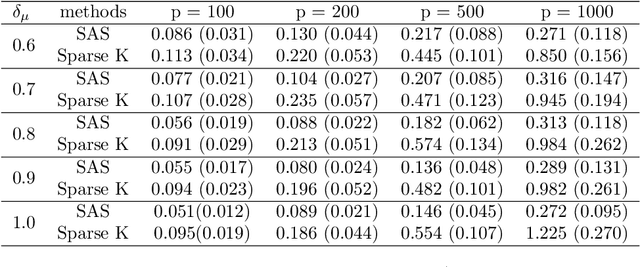
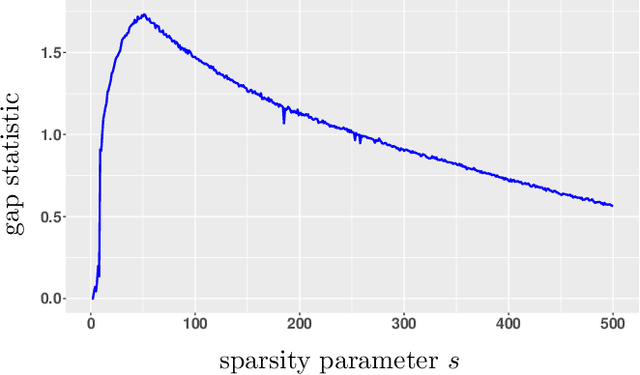
Consider the problem of sparse clustering, where it is assumed that only a subset of the features are useful for clustering purposes. In the framework of the COSA method of Friedman and Meulman, subsequently improved in the form of the Sparse K-means method of Witten and Tibshirani, a natural and simpler hill-climbing approach is introduced. The new method is shown to be competitive with these two methods and others.
A Nonparametric Framework for Quantifying Generative Inference on Neuromorphic Systems
Feb 18, 2016Ojash Neopane, Srinjoy Das, Ery Arias-Castro, Kenneth Kreutz-Delgado
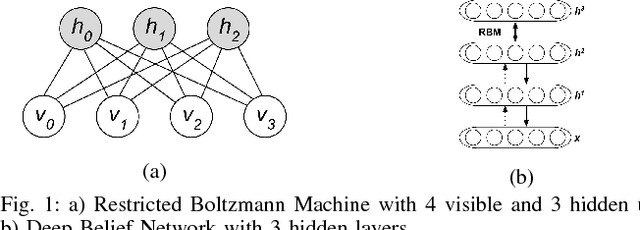
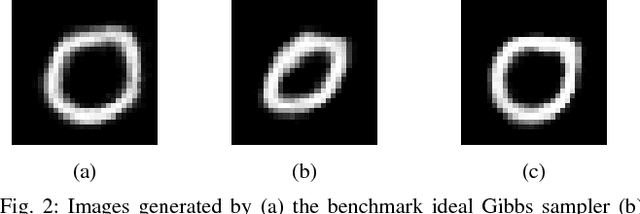
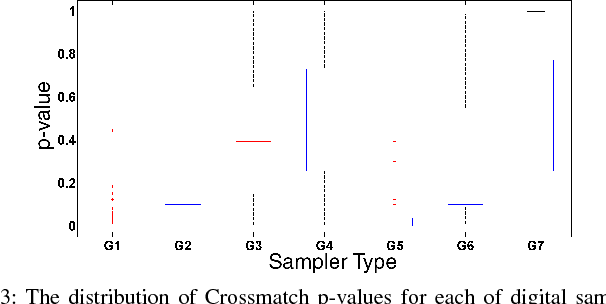
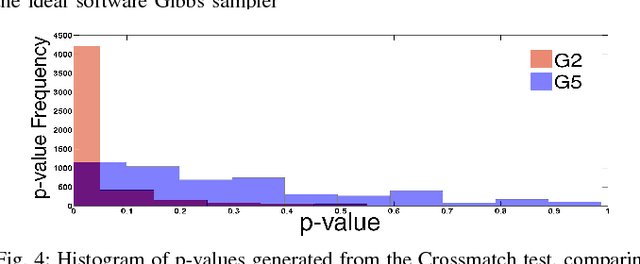
Restricted Boltzmann Machines and Deep Belief Networks have been successfully used in probabilistic generative model applications such as image occlusion removal, pattern completion and motion synthesis. Generative inference in such algorithms can be performed very efficiently on hardware using a Markov Chain Monte Carlo procedure called Gibbs sampling, where stochastic samples are drawn from noisy integrate and fire neurons implemented on neuromorphic substrates. Currently, no satisfactory metrics exist for evaluating the generative performance of such algorithms implemented on high-dimensional data for neuromorphic platforms. This paper demonstrates the application of nonparametric goodness-of-fit testing to both quantify the generative performance as well as provide decision-directed criteria for choosing the parameters of the neuromorphic Gibbs sampler and optimizing usage of hardware resources used during sampling.
Community Detection in Sparse Random Networks
Sep 25, 2014Ery Arias-Castro, Nicolas Verzelen

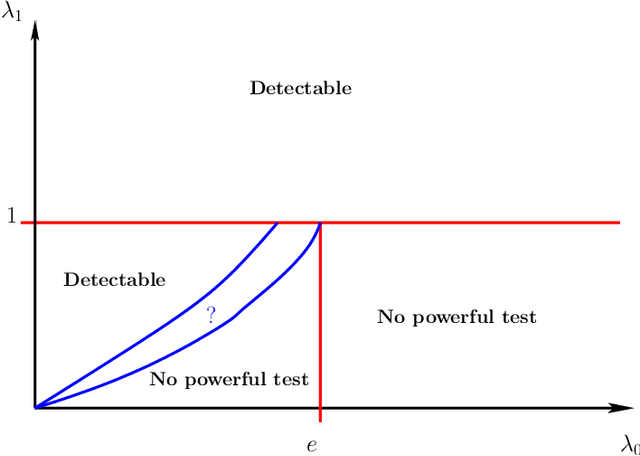

We consider the problem of detecting a tight community in a sparse random network. This is formalized as testing for the existence of a dense random subgraph in a random graph. Under the null hypothesis, the graph is a realization of an Erd\"os-R\'enyi graph on $N$ vertices and with connection probability $p_0$; under the alternative, there is an unknown subgraph on $n$ vertices where the connection probability is p1 > p0. In Arias-Castro and Verzelen (2012), we focused on the asymptotically dense regime where p0 is large enough that np0>(n/N)^{o(1)}. We consider here the asymptotically sparse regime where p0 is small enough that np0<(n/N)^{c0} for some c0>0. As before, we derive information theoretic lower bounds, and also establish the performance of various tests. Compared to our previous work, the arguments for the lower bounds are based on the same technology, but are substantially more technical in the details; also, the methods we study are different: besides a variant of the scan statistic, we study other statistics such as the size of the largest connected component, the number of triangles, the eigengap of the adjacency matrix, etc. Our detection bounds are sharp, except in the Poisson regime where we were not able to fully characterize the constant arising in the bound.
 Add to Chrome
Add to Chrome Add to Firefox
Add to Firefox Add to Edge
Add to Edge